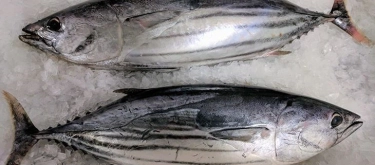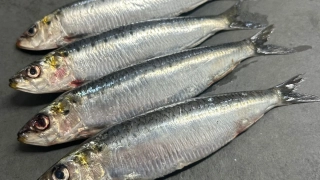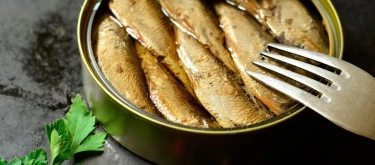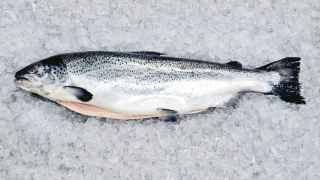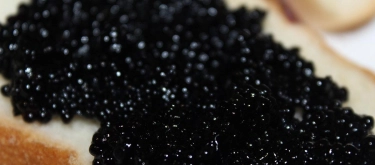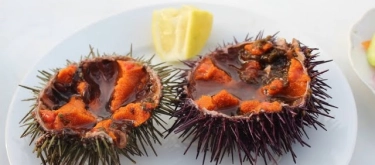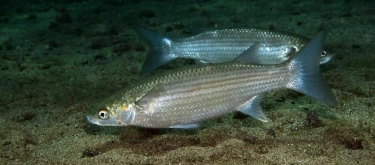Canned Tuna: Taste Profile, Aroma, Benefits and Health Risks
Canned tuna has been an essential component of global cuisine for decades. Originally developed as a means of preserving fresh fish, it has evolved into a versatile ingredient that can be used in a multitude of recipes. Its convenience, affordability, and nutritional value have made it a favorite for busy households and gourmet chefs alike. Whether incorporated into a hearty tuna salad, a pasta dish, or served straight from the can as a protein-rich snack, canned tuna brings a mild, reliable flavor and valuable nutrients to the table.
Canned tuna is a popular, shelf-stable seafood product, naturally gluten-free and rich in high-quality protein. Often available in water or oil, it fits well into a balanced diet and provides essential omega-3 fatty acids and vitamins. Always choose sustainably sourced canned tuna to ensure both quality and environmental responsibility.
What does Canned Tuna taste like?

Complete Sensory Description
Taste:
Canned tuna has a mild, clean flavor with a hint of the sea. It offers a subtle umami taste, balanced by a light brininess and a touch of natural saltiness. The flavor is straightforward and not overly “fishy,” making it an adaptable ingredient in various dishes. When packed in oil, it may also carry a gentle, buttery richness.
Aroma:
The aroma of canned tuna is fresh and lightly marine. It carries a faint scent of the ocean with hints of salt and, if packed in oil, a delicate note of the oil’s flavor, creating an inviting smell that promises a clean, savory taste.
Texture:
The texture of canned tuna is firm yet flaky, with a moist consistency that easily breaks apart. When stirred into salads or mixed into spreads, its texture provides a pleasant, satisfying bite without being overly dry or mushy.
Appearance:
Visually, canned tuna appears as uniform, light-colored flakes that range from white to pale pink. Its presentation is clean and consistent, reflecting the quality of processing and the care taken in preserving its natural state.
In-Depth Flavor Analysis
- Subtle Oceanic Notes:
The primary flavor of canned tuna is its gentle, clean taste that hints at its marine origins. It offers a light umami character balanced by a slight saltiness. - Mild and Versatile:
Its mild flavor profile makes it an excellent base that readily absorbs additional flavors from dressings, herbs, or spices. - Oily vs. Water-Packed:
Water-packed tuna emphasizes its natural, subtle taste without added richness, while oil-packed varieties offer a slightly enhanced, buttery note that can add depth to dishes. - Balanced Finish:
The finish is smooth and clean, leaving a refreshing aftertaste that encourages further culinary creativity.
Culinary Applications
- Tuna Salads and Sandwiches:
Mix canned tuna with mayonnaise, herbs, and seasonings to create classic tuna salads, perfect for sandwiches or served on crisp lettuce. - Pasta and Rice Dishes:
Incorporate it into pasta dishes or rice salads to provide a protein boost and a delicate, savory flavor. - Casseroles and Pies:
Use canned tuna as a key ingredient in casseroles and savory pies, where it blends with vegetables and sauces for a hearty meal. - Innovative Fusion:
Experiment with adding tuna to wraps, tacos, or even modern sushi rolls, where its mild taste pairs well with bold, complementary flavors. - Quick Snacks:
Enjoy canned tuna straight from the can, paired with crackers or fresh vegetables for a nutritious, on-the-go snack.
Selection and Storage
Selecting Canned Tuna:
- Look for cans that are well-sealed and free of dents or rust, which ensures product safety and freshness.
- Decide between water-packed for a lighter taste or oil-packed for additional richness, depending on your culinary needs.
- Check the label for sustainability certifications (such as MSC) to ensure responsible sourcing.
Storage Recommendations:
- Store unopened cans in a cool, dry place away from direct sunlight.
- Once opened, transfer any unused tuna to an airtight container and refrigerate immediately.
- Consume within 2–3 days of opening to ensure optimal flavor and safety.

Nutritional Insights
- High-Quality Protein:
Canned tuna is an excellent source of lean protein, essential for muscle repair and overall health. - Omega-3 Fatty Acids:
It provides beneficial omega-3 fatty acids, which support cardiovascular and brain health. - Low in Fat:
Water-packed tuna, in particular, is very low in fat, making it a healthy option for those monitoring their fat intake. - Essential Vitamins and Minerals:
Tuna offers vitamins B12 and D, along with minerals like selenium and phosphorus, contributing to a balanced diet. - Low-Calorie:
Despite its nutrient density, canned tuna is relatively low in calories, making it a smart choice for weight management.
Expert Insights & Culinary Tips
- Minimal Cooking Needed:
Since canned tuna is already cooked, it should be added to recipes without overcooking to preserve its delicate texture. - Flavor Enhancement:
Pair canned tuna with fresh herbs, citrus juices, or a dash of spice to enhance its natural flavor without overpowering its mild taste. - Versatile Usage:
Experts recommend using tuna in both classic recipes and modern, creative dishes—its neutral flavor makes it an excellent canvas for culinary innovation. - Presentation Matters:
For a refined presentation, consider serving tuna in layered salads or in elegant, open-faced sandwiches that showcase its texture. - Sustainability Tip:
Always opt for sustainably sourced canned tuna to support environmentally responsible fishing practices.
Interesting and Curious Facts
- Historical Staple:
Canned tuna became popular in the early 20th century as a convenient way to preserve fish, revolutionizing access to high-quality protein around the world. - Global Favorite:
It is a dietary staple in many countries, cherished for its convenience, nutritional benefits, and versatility in recipes. - Sustainability Focus:
Due to concerns about overfishing, many brands now emphasize sustainable practices and certifications, making canned tuna a more eco-friendly option. - Economic Impact:
Canned tuna is not only a dietary staple but also a significant economic commodity, supporting fishing communities and global trade. - Culinary Versatility:
Chefs have embraced canned tuna in innovative ways, from gourmet tuna tartare to fusion dishes that blend traditional Mediterranean flavors with modern techniques.
How to Enjoy Canned Tuna
- Classic Tuna Salad:
Combine canned tuna with a touch of mayonnaise, diced celery, red onion, and a squeeze of lemon for a timeless, flavorful salad. - Tuna Sandwiches:
Serve it on whole-grain bread with crisp lettuce, tomatoes, and a dash of pepper for a nutritious, satisfying meal. - Pasta and Rice Dishes:
Mix tuna into cold pasta salads or warm rice dishes with fresh herbs and vegetables for an easy, protein-rich meal. - Innovative Snacks:
Enjoy canned tuna with crackers, avocado slices, or as part of a Mediterranean mezze platter. - Fusion Recipes:
Experiment by incorporating tuna into modern recipes—such as tuna tacos or sushi-inspired rolls—to add a savory twist to traditional dishes.
Harm and Dietary Considerations
- Allergen Awareness:
Fish is a common allergen; ensure you have no known allergies before consuming canned tuna. - Sodium Levels:
Canned tuna can be high in sodium, especially in varieties packed with added salt. Rinse or choose low-sodium options if needed. - Quality and Freshness:
Improperly stored or older cans may affect taste and nutritional quality. Always check expiration dates and the condition of the can. - Mercury Content:
While generally low in mercury compared to larger predatory fish, moderation is advised—especially for pregnant women and young children. - Balanced Diet:
Incorporate canned tuna as part of a varied diet to ensure nutritional balance and prevent overconsumption of any single nutrient.
Final Thoughts & Sensory Journey
Embark on a final sensory journey with canned tuna—a convenient yet nutritious seafood treasure that embodies the subtle flavors of the ocean. Picture the mild, slightly sweet taste with a refreshing hint of brininess, complemented by a tender, flaky texture that melts gracefully in your mouth. Whether incorporated into a classic salad, layered in a gourmet sandwich, or mixed into a vibrant pasta dish, canned tuna offers a versatile culinary experience that nourishes and delights. Let its balanced flavor and practical convenience inspire your next meal, transforming everyday dining into a celebration of quality and taste.
References
- McGee, H. (2004). On Food and Cooking: The Science and Lore of the Kitchen. New York: Scribner.
- Food and Agriculture Organization (FAO). (2018). "Sustainable Fisheries: Blue and White Fish Overview."
- Journal of Seafood Science. (2017). "Nutritional Benefits and Culinary Applications of Mullet Species." (Note: Replace with a relevant source on tuna as needed.)
